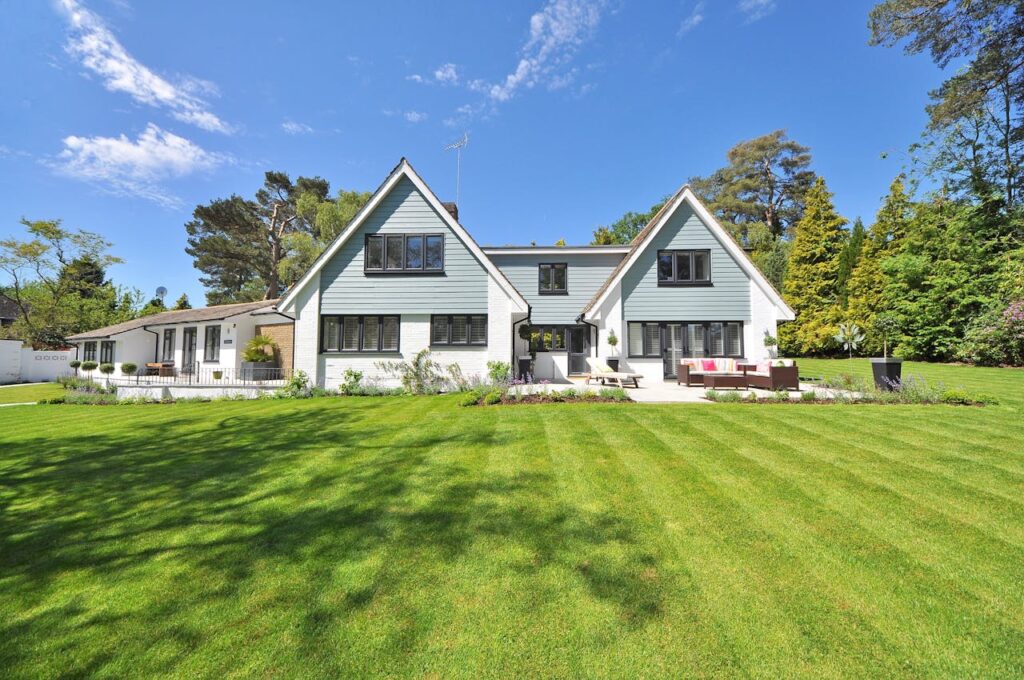Smart Planning Starts the Right Way
If there’s one thing we’ve learned over the years in commercial irrigation, it’s this: no two properties are the same and no good system starts with guesswork. Whether you’re managing a commercial site, planning a public green space or overseeing a mixed-use development, proper irrigation design is the foundation for success. And despite what a few overambitious weekend warriors might think, commercial irrigation isn’t something you want to DIY or leave to a general handyman crew.
At Hydroscapes we’ve worked with developers, municipalities and property managers who came to us after their first system failed or just never performed right. Nine times out of ten, the problem started at the planning phase. That’s why we begin with detailed site plans, often pulling directly from civil engineering and landscape architecture drawings. We account for everything: building placement, hardscapes, plant zones, water sources, you name it.
On top of that, we make sure your design complies with local permitting rules. Some municipalities require stamped irrigation plans while others want post-installation inspections. Skipping these steps can hold up your project or worse, force a costly re-do later.
Know What You’re Working With Before You Build
Here’s something we stress with every client: we can’t design what we don’t know. Good irrigation starts with real data, actual measurements, not assumptions. For commercial-scale work, that includes things like:
- Total property square footage
- Static water pressure (PSI)
- Gallons per minute (GPM) available at the point of connection
- Meter size and location
- Local climate and evapotranspiration rates
This information impacts everything from pipe sizing to controller selection. If your available pressure is low, for instance, trying to run too many zones off one mainline will lead to low head performance or worse, damage to system components. And in areas with heavy rainfall versus arid climates, the programming and scheduling of your controller will look completely different.
Sometimes people want to start with product choices, what kind of rotors, valves or sensors to use, but those decisions only make sense once the data is in hand.

Size Matters and So Do Zones
Let us share a quick story. A few years back, we got a call from a commercial property manager whose irrigation system was barely covering half the turf during peak season. Turns out, their original installer had undersized the mainline and overloaded several zones to save on material costs. The result? Water pressure that dropped like a rock once the system activated and dry patches across multiple lawn areas.
It’s a common mistake. Too many sprinkler heads on a single zone can cause inconsistent spray patterns and stress the system long-term. Oversized piping, on the other hand, adds unnecessary cost. The sweet spot takes careful planning and a knowledge of hydraulic calculations most folks don’t want to touch.
The key here is this: thoughtful design always beats shortcuts. When clients ask for tips for choosing a commercial irrigation system, we tell them to pay close attention to how zones are laid out. Water efficiency and durability depend on it.
Don’t Skip the Bidding Process
Another tip we always give? Don’t settle for the first quote you get. And definitely don’t go with someone who “does irrigation on the side.”
At minimum, get three estimates and make sure every landscape contractor is properly licensed for irrigation work in your state. Licensing matters because it ensures the installer understands not just product installation but also water conservation laws, backflow prevention requirements and safety codes.
Yes, pricing matters, but cheapest is rarely the smartest long-term choice. If someone comes in well below the other bids, ask why. Are they skipping the design phase? Are they using low-grade components? It’s not just about the upfront install, it’s about what happens five years from now when that system needs repairs or starts leaking underground.
You want a contractor who’s thinking like a long-term partner, not just someone trying to win a bid.

Expect to Invest in Quality Design
We often get asked why we charge for design work, can’t we just sketch it out and build? The short answer is: not if you want it done right.
Stamped irrigation plans usually range between $300 and $1,000 depending on project size. But that investment pays off over and over again. With a solid design, you get:
- Accurate water usage estimates
- Efficient zoning and scheduling
- Fewer warranty claims and repairs
- Easier future upgrades or expansions
We’ve seen systems where skipping design led to thousands in rework costs. So when we talk about smart spending, we frame it like this: You’re not paying for paper, you’re investing in the longevity of the system.

Set Your Project Up for Long-Term Success
Commercial irrigation isn’t overly complicated, but it’s easy to get wrong if you rush through it or try to cut corners. Whether you’re a developer breaking ground on a multi-acre site or a business owner sprucing up a storefront landscape, your system should work hard for years, not just during the first season.
We’ve seen firsthand how systems fail when critical steps are skipped, poor zoning, undersized mainlines or cheap components that just can’t take the heat (literally and figuratively). That’s why we build every system like we’re maintaining it ourselves. And why, here at Hydroscapes, we approach every project with a full-picture mindset, combining smart planning, clean installs and ongoing guidance.
If you’re looking for tips for choosing a commercial irrigation system, start with professionals who see the bigger picture. The right team can help you avoid the usual pitfalls, get through permitting without stress and end up with a system that’s efficient, durable and built to grow with your property.
Because in the end, a well-designed system doesn’t just water your landscape, it protects your investment.

